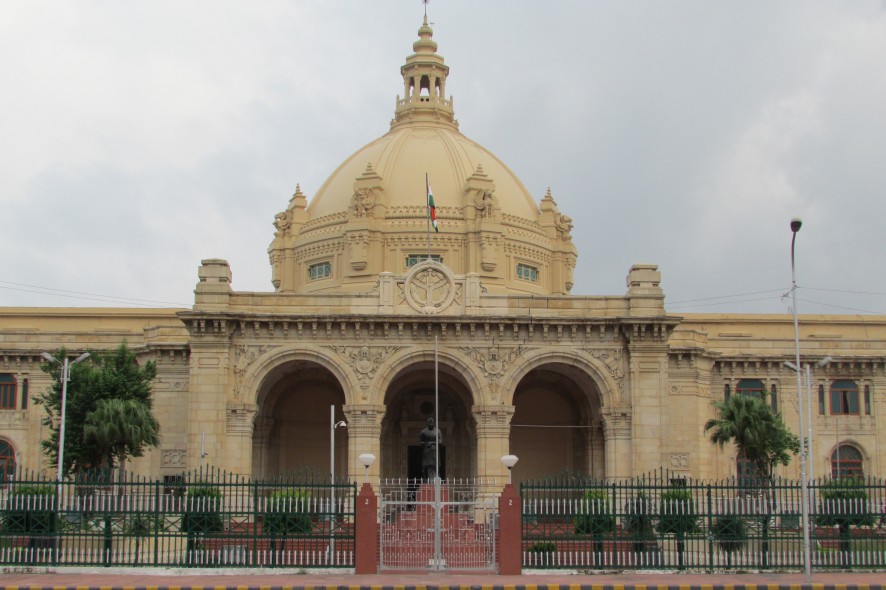For a state craving for development and standing at the toe-end in the list of the developing states; attraction of investments and facilitation of financial transactions becomes a sine qua non. To furnish the groundwork for these processes to proceed, a simplified revenue regime and investment facilitation policy is much warranted that ultimately results in fostering the overall development of the state. With greater revenue generation the Government gets more to spend on programmes of welfare, health, infrastructure, education etc. that leads any state towards overall development and prosperity.
A long awaited revenue reform was finally unveiled by the incumbent Government. Titled as the Uttar Pradesh Revenue Code, 2006, the Act brings sweeping changes to the entire revenue regime, while repealing 32 enactments in total (including Uttar Pradesh Zamindari Abolition and Land Reforms Act, 1950 and the United Provinces Land Revenue Act ,1901) and introducing a fresh amendment as the Uttar Pradesh Revenue Code (Amendment) Ordinance, 2015.
Surprisingly, the Code had been passed by the State legislature back in the year 2006, and yet it stayed in abeyance for a decade despite the President having assented to it in 2012 itself. The changing governments remained unsure as to the enforcement of the Act given the attached political nuances to it. But, the Act already assented to by the President, came to highlight again when a writ petition was filed before the Lucknow Bench of the Allahabad High Court in 2014, when Court sought the Government’s response over its reluctance towards implementing the much needed legislation. The Government, finally having furnished deadline for implementation before the Court, enforced the Act on 18-12-2015.
This Act is of great import for the state as it repeals a number of obsolete laws enacted during the British regime; many of which are inconsistent with one another. Acting as a uniform code, the Act consolidates and amends the laws relating to land-tenures and land revenue in the State and speeds up the disposal of the revenue cases by creating a Revenue Court for disposal of cases relating to matters provided under this Act. The Act also comes with a clause that was fiercely contested upon by the two prominent parties of the state, allowing Dalits to sell their land to non-Dalits even if their remaining holding is less than 3.5 acres. To safeguard land ownership of Dalits and protect them from being forced to sell their land to upper caste persons, the earlier land revenue laws did not allow them to sell their land to OBCs and Upper Castes if their remaining land was less than 3.5 acres.
The new revenue regime is promising in a number of ways, opening up new dimensions for the economic prosperity of the state, especially benefiting the dalits who had failed to secure buyers among their class given their economical backwardness. Now, they are free to sell their lands to whoever they want, they are free to mortgage their property with whomsoever they wish; gift the properties or lease them to people irrespective of their class and realize the worth of their assets.
Here is the list of the enactments repealed vide the new Code:
Sl. No.
Name of the enactments repealed
1. The United Provinces Revenue Officers Regulation, 1803
2. The Bengal Indigo Contracts Regulation, 1823 (Bengal Regulation No. 6 of 1823)
3. The Bengal Indigo Contracts Regulation, 1830 (Bengal Regulation No. 5 of 1830)
4. The Bengal Land Revenue (Settlement and Deputy Collectors) Regulation, 1833 (Bengal Regulation No. 9 of 1833)
5. The Bengal Indigo Contracts Act, 1836 (Act No. 10 of 1836)
6. The Bundelkhand Alienation of Land Act, 1903 (Act No. 2 of 1903)
7. Benares Family Domains Act, 1904 (Act No. III of 1904)
8. Uttar Pradesh Merged States (Application of Law) Act, 1950 (Act No. 8 of 1950)
9. Dudhi Robertsganj (District Mirzapur) Agriculturists Debts Relief Act, 1951 (U.P. Act 32 of 1951)
10. The United Provinces Land Revenue Act, 1901
11. The Pargana of Kaswar Raja Act, 1911
12. The Pargana of Kaswar Raja Act, 1915
13. The Gorakhpur Goraits Act, 1919
14. The United Provinces Board of Revenue Act, 1922
15. The U.P. Abatement of Rent Suits Act, 1938
16. The U.P. Hindu Women’s Right to Property (Extension to Agricultural Lands) Act, 1942
17. The U.P. Village Abadi Act, 1947
18. The U.P. Agricultural Tenants (Acquisition of Privileges) Act, 1949
19. The Uttar Pradesh Zamindari Abolition and Land Reforms Act, 1950
20. The Rampur Stay of Ejectment Suits and Proceeding Act, 1951
21. The U.P. Commutation of Rent (Regulation of Proceedings) Act, 1952
22. The U.P. Stay of Suits and Proceedings (Mirzapur) Act, 1952
23. The Uttar Pradesh Land Reforms (Supplementary) Act, 1952
24. The Rampur Thekedari and Pattedari Abolition Act, 1953
25. The Uttar Pradesh Urban Areas Zamindari Abolition and Land Reforms Act, 1956
26. The Uttar Pradesh Land Reforms (Evacuee Land) Act, 1957
27. The Uttar Pradesh Government Estates Thekedari Abolition Act, 1958
28. The U.P. Recovery of Government Dues (Acquired Estates and Determined Leases) Act, 1960
29. The U.P. Malguzari Tatha Lagan Par Apatik Adhibhar Adhiniyam, 1965
30. The Uttar Pradesh Board of Revenue (Regulation of Procedure) Act, 1966
31. The Uttar Pradesh Government Estates Thekedari Abolition (Re-enactment and Validation) Act, 1970
32. The Uttar Pradesh Land Tenures (Regulation of transfer) (Re-enactment and Validation) Act, 1972






